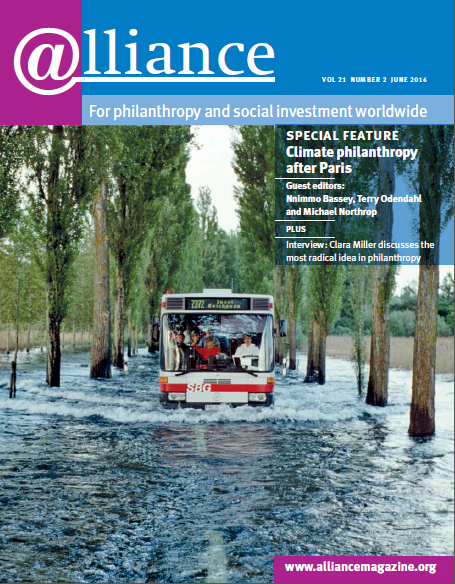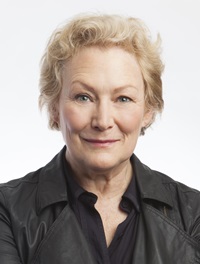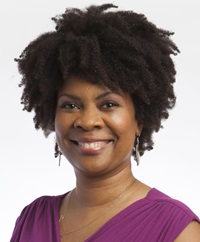Most people think of foundations as institutions which dispense funds for public benefit. But, in reality, foundations are more like low-risk investment companies that channel a small percentage of their assets into philanthropy. That’s the view of Clara Miller, president of the Heron Foundation. If institutional philanthropy is serious about making an impression on the pressing problems of our time, it needs to use all its resources. Clara Miller and Toni Johnson, Heron’s vice president of knowledge and influence, talked to Charles Keidan.
When was Heron started and why?
It was set up by an anonymous donor in 1992 with the mission to help people in communities help themselves out of poverty. From the beginning, Heron was a leader in the idea that it could deploy more of its assets for mission.
When I arrived in 2011, 40 per cent of the endowment had been invested in alignment with the mission. We’re now at 75 per cent.
Why did the founder set up anonymously?
I’ve no idea. I think some people just prefer anonymity. Some people prefer the opposite. But I don’t know.
In the paper you wrote recently,[1] you say that even if foundations were investing 100 per cent of their investments in mission it would still be less than 1 per cent of assets under management in the US. So foundations need to go further.
Absolutely right. If every foundation in the US emptied its endowment, it would be 14 months of the K-12 public school budget. We’re facing systemic problems so grants to civil society organizations won’t make the difference that needs to be made. We need to make a fundamental difference in the economy. This means involving big, muscular public companies and similar players as well as non-profits.
‘If every foundation in the US emptied its endowment, it would be 14 months of the K-12 public school budget. We’re facing systemic problems so grants to civil society organizations won’t make the difference that needs to be made.’
How did you come to that conclusion?
Before I was at Heron, I founded a community development financial institution called the Nonprofit Finance Fund. The Fund made loans and sometimes grant-type equity investments in not-for-profits and social enterprises often together with major banks. Similar organizations made loans for housing and home ownership. Their track records were excellent. Yet, when the financial crisis came, the poor had assets stripped from them by unscrupulous lending practices that far exceeded our reach. We just weren’t big enough.
‘For us at Heron, it was a logical step to make an investment policy statement that basically said if a foundation is making money on the very things that are undermining its success, it’s in breach of its fiduciary duty of obedience to mission.’
We realized that in the absence of reliable work and jobs, all the good work on access to credit or job training wouldn’t work. If there were no jobs, you wouldn’t be able to pay the debt on your home. If we carried on investing in predatory lenders, this cycle was never going to stop. So for us at Heron, it was a logical step to make an investment policy statement that basically said if a foundation is making money on the very things that are undermining its success, it’s in breach of its fiduciary duty of obedience to mission.
So most foundations are in breach of their fiduciary duty?
I think so. We take the duty of obedience to mission seriously. With foundations, almost all the attention is focused on grantmaking but their core activity appears to be investing for highest possible returns and lowest risk. Foundations are essentially tax compliance vehicles set up to be maximally compliance-ready not to be maximally philanthropic. Most businesses set out to either make the best widget or provide the most social benefit. Of course they comply with the law, which includes tax compliance, but they don’t make tax compliance their strategic imperative. Foundations by and large are flipped in that proposition.

Home care worker Maria Carrero of Cooperative Home Care Associates, sister organization of Heron grantee Paraprofessional Healthcare Institute, works with a client.
How can we get back to what you call in your essay ‘fundamental philanthropy?’
One thing we’ve done at Heron is get rid of the division between the investment side and the giving side. This means investing is done with a hybrid lens of mission and finance irrespective of whether it’s grants or loans. As investors, foundations usually look mainly at the asset class level. We look at the enterprises underneath that give those assets value, and ask what their impact is, their net contribution to society.
It’s the same whether an investee is a for-profit or a non-profit. At the Nonprofit Finance Fund, we’d look at a deal to build a charter school, say, and ask what it was going to take to build it, because we didn’t want to lend them $25,000 for a $2.5 million job. At Heron, too, we want to make sure our investees succeed, no matter what part of the portfolio they are funded from.‘One thing we’ve done at Heron is get rid of the division between the investment side and the giving side.’
I see you redefined the term impact investing. Rather than distinguish between traditional investment designed to maximize returns and impact investing designed to have a social benefit, your argument seems to be that everything is impact investing.
When people ask how many foundations are doing impact investing, I say 100 per cent of them – they just don’t know whether that impact is positive or negative. That’s a glib answer but if we say that solving social problems using money is confined to a narrow definition of impact investing, then we pretend that problems can be solved on the margin by small social enterprises and non-profits. We allow the rest of the economy to do whatever it feels it has to do to maximize profits even when this behaviour continually increases the supply of problems. I think that’s part of the problem. There’s also a material risk to investors in environmental, social and governance issues and we think that the best-managed companies recognize this. In time the social and financial returns will be better for the best-managed companies and we should be pushing capital towards them.
‘We are back and forth on whether it’s better to disinvest or engage with the companies that we think are not making positive returns to the world. I respect the decision to disinvest, but we haven’t yet done that.’
Is divestment from fossil fuels a form of positive impact investing?
We are back and forth on whether it’s better to disinvest or engage with the companies that we think are not making positive returns to the world. I respect the decision to disinvest, but we haven’t yet done that.
Are there any enterprises that you do think shouldn’t be invested in? Let’s think more broadly than fossil fuels.
Let me give you an example of how we’re thinking about this. When we took the first step, we examined our holdings and asked ‘what do we have?’ How do our holdings affect our mission to help people and communities help themselves out of poverty? There were some unpleasant surprises including the biggest private prison operator in the US. It’s a public real estate investment trust. We were looking at the real estate companies and especially those that have the most employees. And it was like, ‘oh most of these ones have 20, 30, 50′, and then here was one with thousands of people, and it was Corrections Corporation of America. I thought, ‘are these prisoners counted as employees?’ Some version of this went into the Huffington Post. Toni got an email from Corrections Corporation giving us the impression they thought our statement was libellous.
So you’re not investing in them any more?
We’re not investing in them any more.
There’s something universally unpleasant about taking a business model meant for a hotel, which puts heads in beds to make money, and putting it into a private prison context where the business model is driven by increasing occupancy not prevention or reduction. They have quotas to have at least 70 per cent occupancy. It’s surreal.
Toni: As no prisoners are employees, we ended up having a conversation about how you report on prison labour as part of your business model. Even if you’re not a values investor, you might want to know because it affects your business economics.
Who should be the arbiter within foundations about which companies are sufficiently ethical to invest in?
I think it’s a question of having ethical investors publicly driving towards the right outcome. If you tell pension funds like CalSTERs which represents many public employees who are unionized – schoolteachers, nurses and so on – that they’re invested in Corrections Corporation or Walmart, which is not treating its workers well, they’re appalled, because they’re unions. And they’re saying ‘this is what’s funding my pension?’
Are you putting too much faith in markets and businesses as the primary solution to social problems? What about government?
We are very aware that government policy is hugely important. We don’t have that expertise ourselves but we do make grants to organizations with robust policy programmes. I was speaking at a Wall Street gathering recently and found myself saying that now government is in the hands of the corporations, we might as well go directly to the corporations rather than stop off in Washington.
‘The question is, how do we create the economy we want? The only way we can do that is to have an affirmative position and incentivize and create good behaviours within corporations.’
Toni: The question is, how do we create the economy we want? The only way we can do that is to have an affirmative position and incentivize and create good behaviours within corporations.
But if big corporations have disproportionate influence, how can you persuade them to adopt concern for wider public well-being?
I think that enlightened self-interest has a place even in corporate America. CEOs have grandchildren, too. There are some corporate leaders who are trying to manage for the long term and there are private corporations like Mars and public companies like Danone who are concerned about their supply chain and environmental footprint. We are not going to survive as a planet if we can’t all do this. This is an existential question, not just corporate policy acting in some sort of bubble.
Coming back to Heron, you still make grants?
We do, though we’re more likely to call them philanthropic equity or enterprise capital grants. What we look at is what capital is needed to bring an organization to the next stage of development. We’re making an analogy between our grant money and equity-like capital for a for-profit. And that means the average size of our grants has gone up from $75,000 to $1.5 million in the past couple of years. Those grants are typically made to projects that are somewhere between $3 million and $30 million in size, so they’re always alongside others.
Can you give me an example?
We gave the Sustainability Accounting Standards Board (SASB) a grant of $2 million to develop data standards for public companies to report environmental, social and corporate governance data on their 10K filings to the Securities and Exchange Commission. SASB have raised capital from a whole range of foundations. It’s a different kind of grantmaking. It’s not a grant for an individual project of interest to the foundation; it’s a grant to help them build the capacity to attract revenue and then do what it set out to do for the foreseeable future. It’s an organization that is going to move markets or move the nature of a market.
Are you optimistic about your ideas becoming mainstream?
I’ve been amazed. Rockefeller Brothers Fund has disinvested from fossil fuels and is moving ahead in other ways. The McKnight Foundation is well down the path. I’m on a committee at the Ford Foundation which is moving towards allocating some of the endowment to impact investing. I’m on a similar committee at Kresge Foundation. The Surdna Foundation has also moved ahead. A range of foundations are starting to make allocations of their endowments to impact investing, or to examine options for impact investing. In the for-profit world, Morgan Stanley has a large unit, Larry Fink CEO of BlackRock is touting it, and Bain and Company has an impact fund.
Where will it leave grantmaking?
We continue to make grants. We hope that, eventually, impact investing is simply the way all investing is done: with an eye on the social, environmental and civic implications. We’re hoping that there will be enough of an adviser corps so that the accounting, the materiality and so on will become a standard part of market measurement. There’s no reason people can’t continue to make grants. In fact foundations have to make grants or programme-related investments to be compliant with tax law. It’s just that they should try and make all their resources go in the same direction.
Toni: It works for the non-profits, too. Instead of having to clean up after predatory lenders, they’ll have more resources for doing good and bringing people into home ownership and small business. I think there’s a misconception among non-profits that impact investing by foundations means less for them, when actually there’s a synergy.
‘At the end of the day, grants are a tiny part of the non-profit sector’s revenue. The best use of grants is for human rights organizations that have no other source of support and are doing things for which there is no measurable financial return at all.’
Clara: At the end of the day, grants are a tiny part of the non-profit sector’s revenue. The best use of grants is for human rights organizations that have no other source of support and are doing things for which there is no measurable financial return at all, but are absolutely necessary – for innovative projects, ideas and work that takes society forward in a big way.
Toni: Going back to the optimism question: I think that after the financial crisis, we’re seeing a movement of asset holders who are looking at capitalism very differently. Even conservatives are seeing that they have to think about people and the environment differently. This sort of work is building the framework for people of all political persuasions.
So if capitalism needs to be recalibrated, does philanthropy, too?
Philanthropy should be the leaders of an asset holder movement, not the laggards. At the moment, pension funds are ahead. And then, significantly, family offices, especially when the next generation is coming in. That’s driving a change in big banks because they have to take account of a younger generation with different ideas. Philanthropy should be excited about these possibilities.
Clara Miller is president of the Heron Foundation.
Toni Johnson is Heron’s vice president of knowledge and influence.
Footnotes
- ^ Clara Miller, Building a Foundation for the 21st Century, http://heron.org/engage/publications/building-foundation-twenty-first-century









Comments (0)